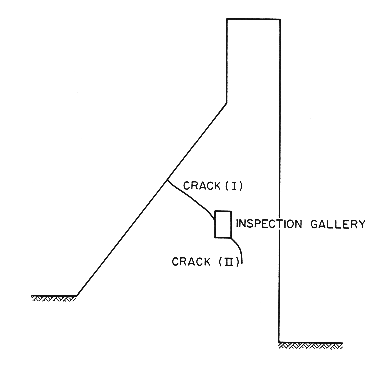|
Fontana dam experienced alkali-silica reaction which
caused large cracks to form. How does the reaction cause cracking? The
reaction creates the silica gel or other product. Then the concrete has to
make room for the silica gel, so the concrete has to expand, or "grow". This
expansion, like expansion due to heat, causes tension in the concrete. As you
saw in the concrete section, concrete is not
strong in tension and will crack. Fontana dam is still "growing" because of
the reactions!
Why doesn't this happen to all concrete structures then? Because it
takes just the right amount of cement, chemicals in the aggregate, and
moisture to make the reaction happen. |
 the cracked Fontana dam, North Carolina |




